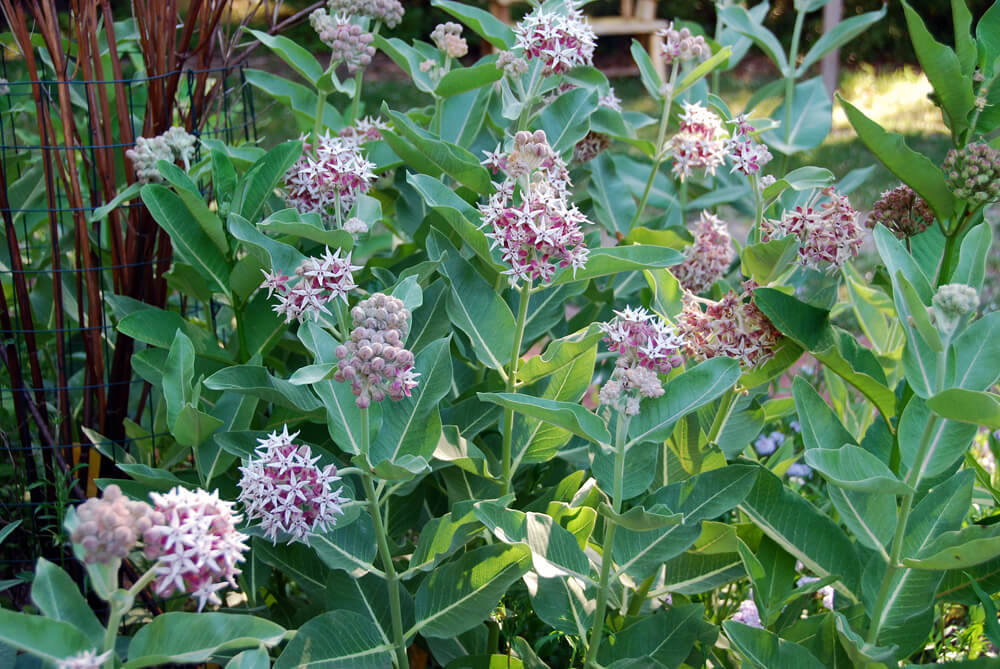Milkweeds are wonderful habitat plants that provide resources for a host of creatures. Various Asclepias species grow throughout the northern hemisphere; some are restricted in range, and others are widespread and adaptable. Diverse cultures during the course of human history have discovered many uses, including medicinal, for all parts of these plants. The genus name is derived from Asklepios, the Greek god of medicine.
In the wild Asclepias speciosa is often found growing in seasonally wet low spots. It is a plant that spreads by underground stems to colonize an area; so be sure to allow it room in the garden. It is drought tolerant, but will respond to water. It can sometimes take a frustratingly long time to establish a blooming stand, but it is well worth the wait!
Flowers in large, showy clusters are produced from late spring to summer. They are beautiful and fragrant, and attract an array of interesting large insects and pollinators, including of, course, the Monarch butterfly. An often, unwanted guest of Milkweeds is the imported orange Oleander aphid. Although this aphid is host specific, it is best to control populations right away; this can be done by simply washing the bugs off the plant with a strong spray of water. Large aphid populations weaken the plant and lessen the resources available to the Monarch butterfly larvae.
The seed pods produced in fall are also large and showy; especially when they split open to reveal rows of flat seeds, each with a delicate silken parachute. Many invertebrates eat the seeds, and I like to collect the silk, to make it available as nesting material for the songbirds in spring. Milkweeds are poisonous plants; the deer do not eat them.


